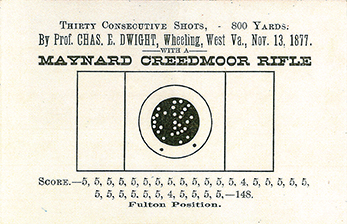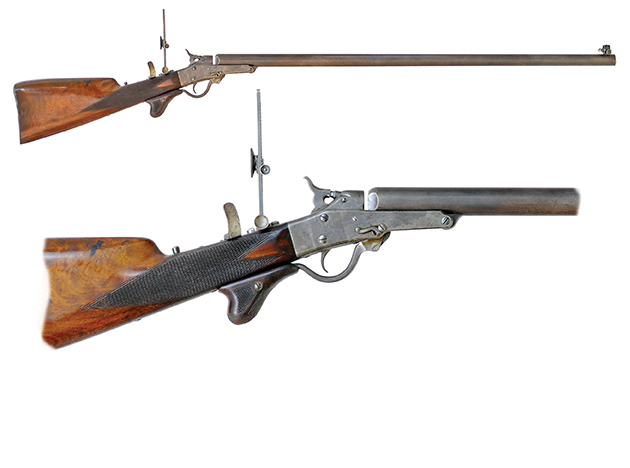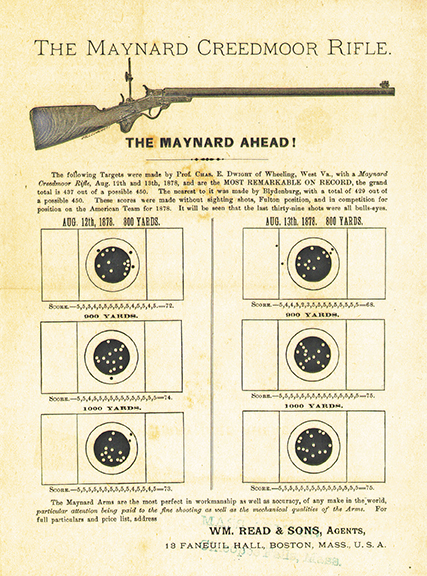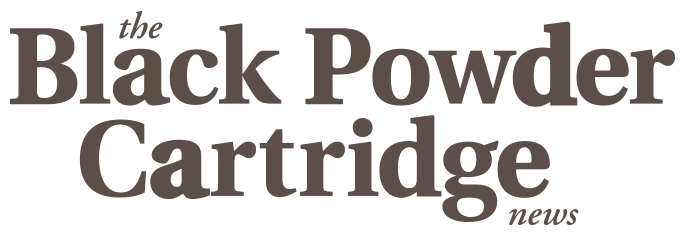Professor Charles E. Dwight
Part I
feature By: Leo J. Remiger | June, 25
Charles E. Dwight was the only son of Henry L. Dwight, and a descendent of the late Rev. Timothy Dwight, a famous divine, author, and one-time president of Yale College, Massachusetts. Charles was born in 1849, in Somers, Tolland County, Connecticut, and first entered the drug business in 1867, at Greensville, Pennsylvania, where he remained three years and then relocated to Wheeling, West Virginia. Mr. Dwight was married on January 28, 1875, to Lizzie, fourth daughter of the late Thomas Neill, originally partner in the firm of Neill & Ellingham (wholesale grocers) and their family consisted of two sons.
Dwight first clerked at Mr. Bocking’s drug store, on the corner of Chapline and Twenty-forth, but after being two years in his employ he bought out the business. In 1877, he removed the business to the opposite corner of the street. In 1872, he commenced close study to become competent as an analytic chemist, sharing the advantage of a correspondence with Yale and Harvard colleges, as well as several eminent professors in chemistry. In 1874 and 1875, he gained popularity by making analyses of ores for the state of West Virginia. In 1876, he was appointed by the U.S. Centennial Commissioners to make analyses of all ores and minerals sent from this state to the World’s Fair at Philadelphia. He was also probably the first, this side of the Allegheny mountains, to construct a telephone according to principles of the reputed inventor – Professor Dolbar [Dolbear] – whose intimate acquaintance he was privileged with.1 and 2
His shooting career dates back to as early as 1871, but the first real record we find is mentioned on January 10, 1878, when Forest and Stream, Vol. 9, No. 23, mentions a long-range rifle club being formed in September the previous year. The same article mentions the President, C.E. Dwight, made a score of 148 in 30 shots at 800 yards, but no date was provided as to when that score was fired nor under what conditions it was fired.3
On the March 28, 1878, Forest and Stream published a letter from Charles E. Dwight describing how the rifle club was formed and why it changed its name:
Maynard Rifle Club and the Maynard Rifle

My only reply was I had used one and become attached to it. In my practice at 800 yards, on our range on Nov. 7, 1877, I made sixteen bull’s-eyes out of twenty shots, scoring 96 in a possible 100. One week later, on the same range, in thirty successive shots I got twenty-eight bull’s-eyes, making a score of 148 in a possible 150. This, I believe, is better work that was done by either of the sixteen men shooting in the last International match.
I have seen ten successive shots at 1,000 yards grouped into a space of less than one fourth of the area of the bull’s-eye. It has also made a string of eight inches at 220 yards with ordinary sights. Mr. H.W.S. Cleveland, of Chicago, who is recognized as a good authority on rifles, I suppose, has written in a letter of several pages to a gentleman here, which is mainly devoted to giving his experience of the Maynard rifle. He speaks of using a .40-calibre, 20-inch barrel, for off-hand shooting, and says he has penetrated seventeen inches of white cedar with it. Also, in speaking of its accuracy he relates firing three shots at 1,000 yards, in which a 3, a 4, and a 5 were scored with this rifle, which is not intended for use at over 500 yards. He mentions that a string of ten bull’s-eyes at 200 yards is not unusual with it. Major Henry Fulton, who had never used a Maynard until last fall, told me that he had fired ten consecutive shots at 800 yards with a Maynard Creedmoor, which were grouped so closely in the bull’s-eye that he could cover them with the palm of his hand. (He is not supposed to have a larger hand than other persons.) Our club, after seeing how very accurate a shooter the Maynard was, changed its name, and now we propose to shoot under the name of the Maynard Rifle Club of Wheeling. The Ballard rifle was sent here after our organization, and public trials of it were made, but no good was ever done here with it, and no rifles were sold. In off-hand practice I have fired five successive shots, with .40-calibre barrel, at 100 yards, into a four-inch bull’s-eye, and scored 46 on two occasions with it at that distance, in ten shots, after forty shots had been fired without cleaning. My great admiration for the Maynard, and my desire to see it given a fair show, had induced me to write the above; and as the Maynard Creedmoor is only something over a year old I hope to see it make a name during the next summer, and put itself into the popular accepted list of first-class rifles.
Wheeling, W. Va.
Chas. E. Dwight4
What he doesn’t mention is provided in the October 13, 1877 issue of the Wheeling Daily Intelligencer:
Woodland
Over two hundred of the prominent citizens of Wheeling yesterday afternoon went out to Woodland, the range of the Maynard Rifle Club, to witness the long-range shooting of Major Henry Fulton and the members of the Maynard club. No attempt was made at shooting a full score by any one of the participants, as none of them had ever used their guns at 800 yards, and the practice was merely to get the proper elevations in which they were “coached” by Major Fulton. Major Fulton shot three times with his own rifle, making two bull’s eyes and one four. He uses the Maynard-Creedmoor, the same that the Maynard Club uses. Prof. Dwight made 23 out of a possible 25, which is certainly very creditable work for a novice. The spectators crowded so close to the firing point that it was with great difficulty that the shootists were able to find room enough to lie down or to clean their guns, and some of them were so unmannerly as to stand at the head of a certain member of the club, about to fire, and blaze away at the same target, offhand, with a Springfield rifle or some other military arm, causing a delay of several minutes while the marker was vainly endeavoring to find the mark of the bullet somewhere in the field where the target was located. The officers of the Maynard Club request us to state that they have secured the exclusive use of the range from Mr. Woods, upon condition that there was to be no short-range shooting on the ground, and they would respectfully request members of other clubs not to use the range for that purpose without consulting the Executive Committee or officers of the club.5

The match itself, and the history of the events leading up to the actual match, make it by far and away the most interesting of the various contests for the Centennial Trophy – Palma. But that is fodder for another story. Just let me say here that there were serious ego issues with some core members of the 1877 team who thought they, and not the National Rifle Association, were the proper persons to arrange the selection of the new team to compete in the 1878 match.
The NRA prevailed and the first “Official” competition for the selection of the American Team of 1878, began at Creedmoor on August 6, 1878. The committee having in charge the selection of the team this year provided four competitions. However, to enable many marksmen, who reside at a long distance from Creedmoor, to participate in the contest, it was decided to allow the competitors in the first two contests to shoot wherever they chose, providing they should make affidavits to the scores thus made. The two final competitions, however, were to be shot at Creedmoor under the superintendence of the officers of the National Rifle Association.
The August 14, 1878, issue of the New York Times reported:
“The action of the Board of Directors of the National Rifle Association, at its last monthly meeting, in extending the privilege to the competitors for places on the American Team to shoot their final scores upon a range of their own selection, resulted in a marked diminution in the number of competitors at Creedmoor yesterday [August 13, 1878]. The Boston men all returned to the Walnut Hill range, and there were only eight competitors at Creedmoor . . .”6
The above stated decisions allowed Prof. Charles E. Dwight to fire all of his qualification scores at his home range in Wheeling, West Virginia. Forest and Stream recorded his third qualification score as follows:
The Most Remarkable of All Scores
Woodland Range, Wheeling, W. Va., Aug. 13. – Prof. Dwight, of the Maynard Rifle Club, having been notified to complete his scores for the American team competition, shot his third competition, Aug. 12 and 13, making the following remarkable scores:


In his score today (Aug. 13) he made thirty-nine consecutive bull’s-eyes, commencing with his seventh shot at 800 yards; no sighting shots, of course. I believe this score beats the world. At the 800-yards range today the wind on the fiftieth shot changed suddenly from 10 o’clock to a 1 o’clock, carrying him outside the three-line, and it required a change of four points of wind to get back into the bull’s-eye. The above scores were made with the Maynard Creedmoor rifle.
J.D. Stanton,
Sec. Maynard Rifle Club7

However, all was not well in the house that Dwight built: The September 5, 1878 issue of Forest and Stream reported in part:
. . . Owing to some error in the arrangement of dates he was compelled to shoot again on the 15th and 16th, and scores of 197 and 188 were made, the fatigue and the care of such a slight built man being sufficient to create the falling away. The team will now be called together, elect a captain, enjoy a few days practice together, and then shoot over the ranges of the “Palma” in 1878 . . .8
Prof. Charles E. Dwight did make the team. Of the qualification scores shot between July 16, and August 16, 1878, C.E. Dwight had the third highest total score of 1,236 with an average score of 206 among the nine men whose scores were posted. Only W.H. Jackson and R. Rathbone had higher scores.
In the September 15, 1878 issue of the New York Times in an article titled "Rifle-Shooting" at Creedmoor, the articles author recorded both Charles E. Dwight and S.K. Wallace of Wheeling, West Virginia as remarking, “That the elevations differed materially from those required on their local range.” Both men were shooting 1873 Maynard No. 14 Long Range Creedmoor rifles.
The National Rifle Association of America Annual Report of 1878 documents Prof. Charles E. Dwight as entering the following matches:
NRA Competition No. II – “Short-Range” Match – Open to All Comers, Any Rifle, 200 yards, Seven Rounds, Position Standing, Possible Score of 35. Dwight used his Maynard and placed 93rd among 159 shooters with a score of 27.
NRA Competition No. III – “Subscription” Match – Open to All Comers, Any Rifle, 200 yards, Seven Rounds, Position Standing, Duplicate Entries Allowed, Possible Score of 35. Dwight used his Maynard and placed 23rd among 33 shooters with a score of 27.
NRA Competition No. V – “Champions” Match – This match was shot in three stages. Open to all Comers, Any Rifle or Rifles, 10 shots at 200, 600, and 1,000 yards, Position Standing, Possible Score of 150. Dwight used a Remington Sporting Rifle at 200 Yards and his Maynard Creedmoor at 800 and 1,000 yards. He placed 15th among 38 riflemen with a score of 126.
NRA Competition No. XV – “Subscription” Match – Open to all comers, Any Rifle, 500 Yards, Seven Rounds, Any Position, Duplicate Entries Allowed, Possible Score 35. Dwight used his Maynard and placed 15th among 34 shooters with a score of 33.
NRA Competition No. XXIII – “Subscription” Match – Open to All Comers, Any Rifle, 600 Yards, Any Position, Seven Rounds, Duplicate Entries Allowed, Possible Score 35. Dwight used his Maynard and placed 25th with a score of 29.
NRA Competition No. XXVI – “Wimbledon Cup” Match – Open to All Citizens and Residents of the United States, 1,000 yards, Thirty Shots, Any Rifle Within the Rules, Position, Any Without Artificial Rest, Possible Score of 150. Dwight used his Maynard and placed 15th with a score of 126.
The International Long-Range Match: Because no foreign countries accepted the invitation to compete, the American Team took the field to try and shoot a better score than any previous team in the previous matches. That is why it was called the “Walk Over” match. The September 26, 1878 issue of the New York Times reported the results as follows:
"On 25 September, 1878, the shooting then began at 800 yards. The team was divided into two squads of four men each. Messrs. Jackson, Sumner, Brown, and Gerrish shot at target No. “Star,” with Mr. J.P Waters as spotter and Davidson of the Reserves, as coach, while at target No. 6, on the right, were Col. Clark, Messrs. Rathbone, Dwight, and Rockwell, who were “coached” by Doughty, of the reserves. All the members of the team used Sharps “Borchard” [Borchardt] rifles, excepting Prof. Dwight, who used a “Maynard” gun. The total made by the team at 800 yards distance was 563, five points less than were made by the American team at 800 yards last year. Mr. Dwight made one “miss” at that distance, and followed it up with another at 900 and two at 1,000 yards. At the close of the second stage the team had made 1,116 points and stood one point ahead of the score of the American team of 1877. Mr. Rathbone made a “bull’s-eye” on the wrong target on his fourth shot at 1,000 yards. Mr. Sumner was successful in winning the prize of $150.00, which was offered by the Sharps Rifle Company to the rifleman who should beat Bruce’s score of 219, made in the match for the “Palma” last year. Following are the scores, the highest attainable individual total being 225, and the greatest possible team aggregate being 1,800 points."

On September 27, 1878, the New York Times reported:
When the riflemen assembled at the firing-points the sky was overcast with heavy black clouds, and there were indications of an approaching storm. The wind blew in fitful gusts from the south-west, down the range from the rear of the riflemen. Judge Stanton, the executive officer, bustled about and spurred the riflemen to get ready in order to finish the match before the storm came on, if possible. At 11 o’clock Jackson “led off” with a “bull’s-eye.” He announced that the elevation was the same as it was at the beginning of the contest on the previous day. There appeared to be a difference in guns, however, as Gerrish got an “Inner,” 3; Brown a “centre,” 4; Rathbone, 3 and Dwight 3 on their opening shots, all of which were “high.” Dwight had abandoned his primitive “Virginia” gun and began his work with a Sharps “Borchard” [Borchardt] rifle. After his first shot he did not leave the “bull’s-eye.” Rathbone was feeling better than on the previous day, although he said he had been sick all of Wednesday night. The teams were squadded as they were the day before, and the same order of firing was observed. The match was shot more rapidly than on the first day, and the first range was shot over before 12:30 o’clock. Both Jackson and Clark, who were on adjoining targets, made clean scores of 75 each, and the team aggregate at 800 yards was 585, nine points more than the score made at the same range by the team of 1877 on its second day. At that time the weather had cleared up and the sun was shining brightly. The wind was in the same quarter, but had increased in violence. A hasty lunch was taken on the field by the riflemen before beginning the battle at 900 yards. The wind seemed to affect them strangely at this range. They all started off badly and several “inners” and “outers” were made, but after a few rounds had been fired they became more steady, and finished with 544, only 10 points behind the score of the team at the same distance last year and one point behind the aggregate score at the first two ranges. It was not quite 2:30 P.M. when the first shot was fired at 1,000 yards, and more deliberation was exercised in shooting at that distance. The wind in the meantime veered around to the south, and blew pretty steadily from that quarter during the first half of the contest. Mr. Rockwell’s gun broke down while he was attempting to fire his first shot at 1,000 yards, and before he was able to complete his score at that distance a violent storm of wind and rain passed over the range, driving everybody under shelter. Capt Jackson and Judge Stanton held a consultation, and it was decided that the match would have to be abandoned, but as the shower did not last long, Mr. Rockwell expressed his anxiety to shoot out his score, as he considered that if he failed to do so, considerable adverse criticism would result on the part of the public. At 5 o’clock, therefore, the team assembled at the 1,000-yard firing point. Messrs. Jackson and Sumner sighted the guns of Rockwell and Dwight, and they began again. Dwight had already fired 12 shots when the shower came on, while Rockwell had a full string to shoot. The sky was dark, and the targets were badly washed when the men were ready to shoot. Rockwell fired and missed, and saying that he could not see the “bull’s-eye,” he abandoned any further attempt to make the score, and President Stanton, the executive officer, declared the match closed. The scores, as far as completed, were as follows:


Fulton Position
1878 “Walk Over” Match
Prof. C.E. Dwight shot in the “Fulton Back” or “Supine” position. His Maynard Creedmoor rifle would have been an early 1877 Maynard Creedmoor model. Options available to him would have been from among the following:
Breech Piece:
Standard Shotgun Butt Model 1873 breech piece.
Barrel:
The standard barrel on a Maynard Creedmoor was round, 32 inches long, and chambered in 44-100 caliber.
Wooden Pistol Grip on Lever:
A checkered wooden pistol grip would have been a standard feature on his rifle. A non-checkered wooden pistol grip was offered as well. These wooden pistol grips were fit to the serpentine lever standard on all straight grip guns. The “S” lever was not introduced until 1881, and was meant to be used with buttstocks that had integral pistol grips on the stock.
Thumb Piece:
The thumb piece would have been standard on his rifle.
Checkering:
Standard checkering would have been on his rifle.
The “Double Diamond” checkering pattern was probably not available until 1880, when it was first shown on the cover of the 1880 catalog.
Buttplate:
The standard steel shotgun butt plate was introduced in 1876, with the first Creedmoor rifles and was very similar to the Sharps Rifle Company steel buttplates.
Tang Sight:
The standard tang sight would have been the 1876 Patent Vernier tang sight as patented by William P. McFarland and George W. Hadley. They received patent number 172465 on January 18, 1876.
Notice:
The heel-mounted sight was not used in the Fulton back position. The butt stock was too far back to allow its use. The rear of the buttstock was supported by the left hand. The left arm and hand also supported the head and neck of the shooter in this particular position.
Front Sight:
Prof. C.E. Dwight would have had the following choices for his windgauge front sight with spirit level:
Remington Long Globe with windage bar and spirit level, Remington Short Globe with spirit level, Hart windgauge front sight with spirit level.
The Marlin windgauge front sight with spirit level so commonly seen on Maynard target rifles was not available until 1879, when it replaced the Hart windgauge front sight.
Appendages:
His Creedmoor rifle would have come with the following items; 25 cartridge cases of 100 grain capacity, capper, cap picker, charger, loader, loading block, cartridge cleaner, three rods and brush, two rag holders, a screw driver and 100 patched and swaged bullets of 520 or 550 grains weight.
Very little is ever written about this “Walk Over” match due to the failure of other nations to accept the invitation to field a team for competition. However, it’s obvious the shooting was first rate. The total aggregate score for the 1878 team was higher than the 1876 aggregate – and this without 17 shots being fired! As for Professor Dwight’s performance, a competitor can only do so much when a gun fails or when nature intervenes in the shooting of a match. He was there, and he was there with his Maynard competing against the top competitors and the finest rifles in the United States at that time. Professor Charles E. Dwight had to be one of the best just to qualify, and remember, he had the third highest aggregate score of all the shooters that qualified for competition, and this with his Maynard No. 14 Long-Range “Creedmoor” Rifle.


